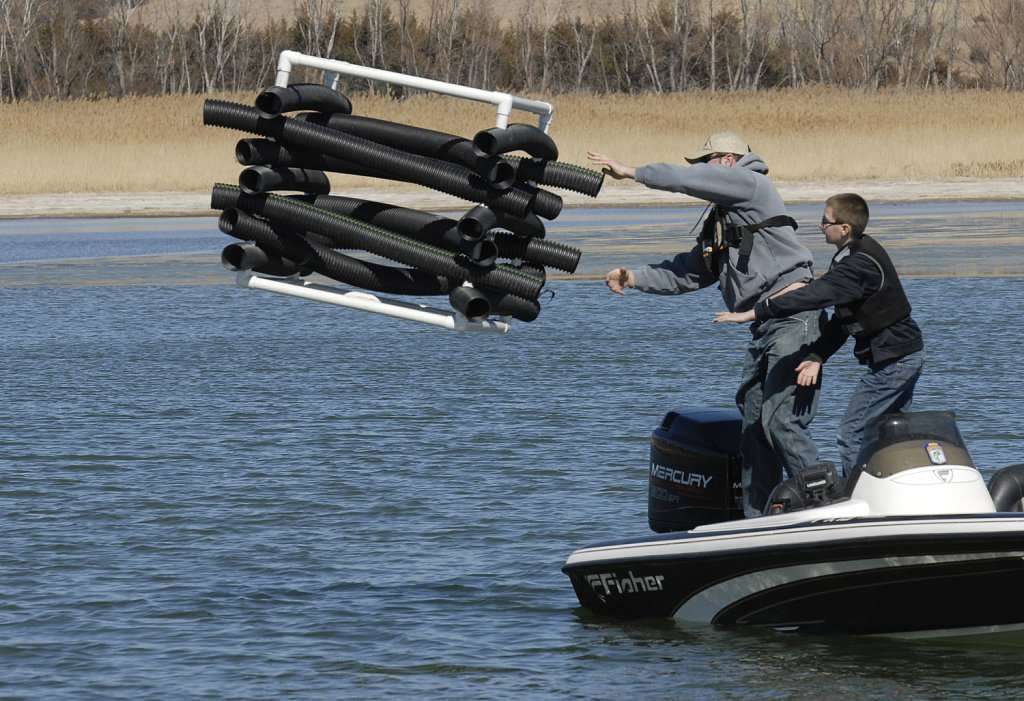
HAYS, Kan. — Lake Wilson became one of the first Kansas fisheries to obtain “Georgia cubes” habitat, thanks to volunteer efforts by the Hays Bass Anglers Association (HBAA) and the Salina Bassmasters early this spring.
The work was coordinated by Scott Waters, a fisheries biologist for Kansas Department of Wildlife, Parks & Tourism (KDWPT).
Twenty volunteers assembled and sank 30 structures in groups of three to five in shallow water on secondary points around the 9,000-acre lake and marked them with GPS coordinates, according to HBAA President Steven Hausler.
“Our clubs are excited to work with fisheries biologists for this project that really targets habitat for black bass in Kansas lakes,” said Nate Brown, habitat committee co-chairman for the Hays club. “The overall target depth and placement of the habitat cubes was the most exciting aspect of the project for us, as they will directly benefit largemouth and smallmouth bass.”
KDWPT purchased 150 of the cubes for habitat improvements in state fisheries but is relying on bass club members for the manual labor. Designed by the Georgia Department of Natural Resources, each cube is made of a combination of PVC and corrugated pipe, measuring 4 feet long and wide and standing 3 feet tall. The bottom is filled with rock, sand or concrete, allowing the cube to sink in an upright position.
Fed primarily by the Saline River, Lake Wilson typically is a clear water lake that features a diversity of habitat at conservation pool level, including rocking outcroppings and standing timber, as well as aquatic and shoreline vegetation. But as central Kansas continues to suffer an extended drought, the fishery has lost much of its shallow cover.
Consequently, volunteers also have worked with biologists to cut down and place hundreds of invasive red cedar trees. The Hays club planned and coordinated habitat improvements in Duval Cove, Elm Creek and Lew’s Point.
“The lake levels have been in decline for several years, exposing the shoreline that is generally underwater,” Hausler explained. “These habitat projects that our club members have been highly involved in are targeting shallow water to help with escape cover for young-of-the-year fish this year, and improving habitat on the currently exposed shoreline, with the hopes that the rains eventually come.”

